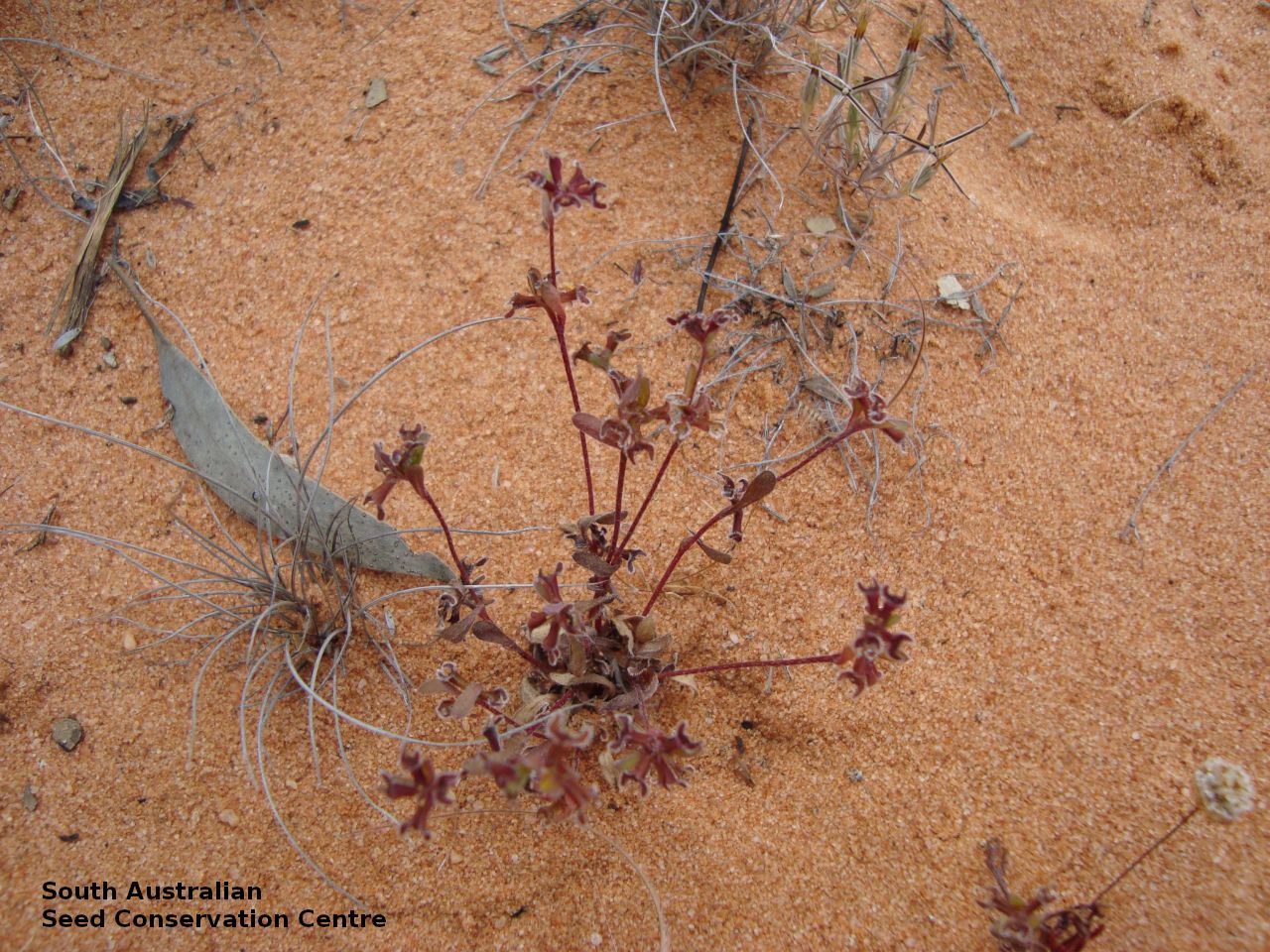
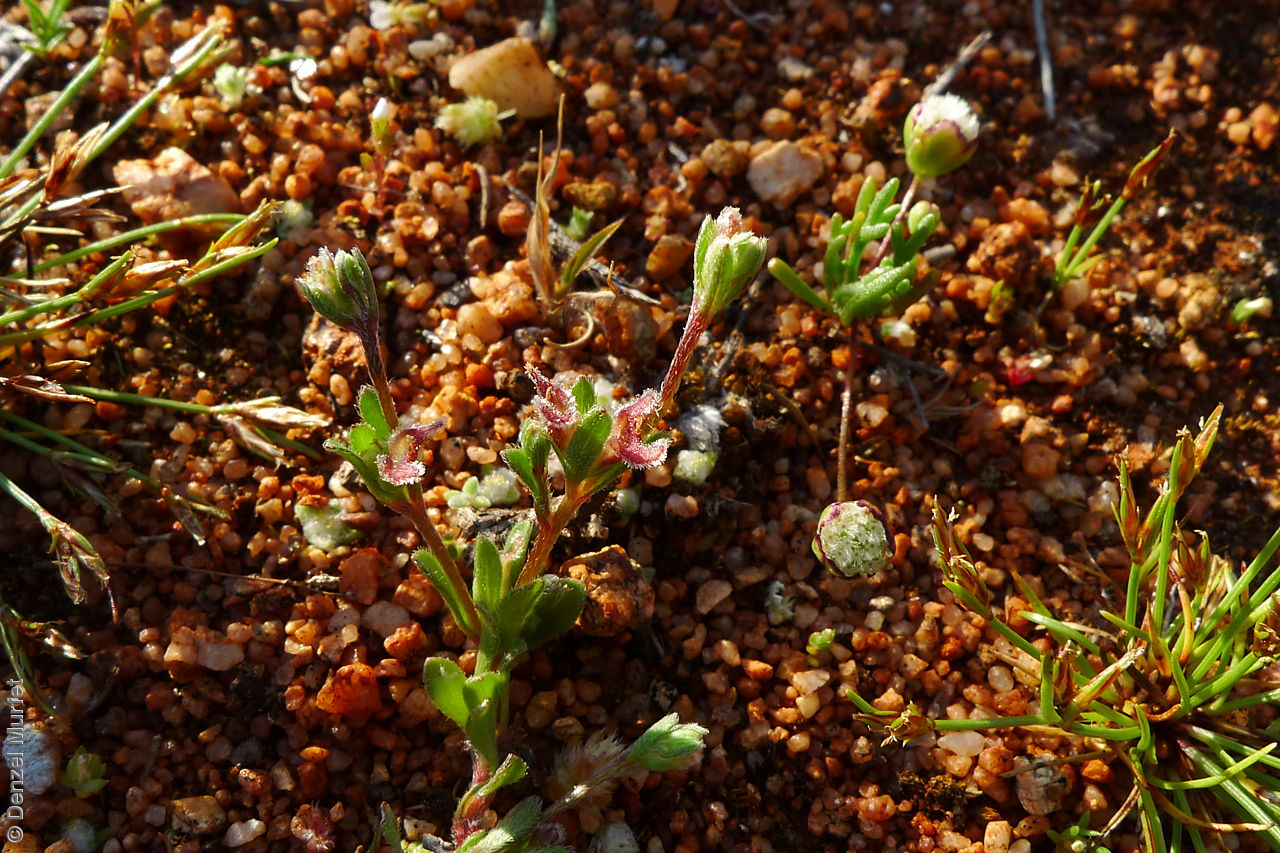
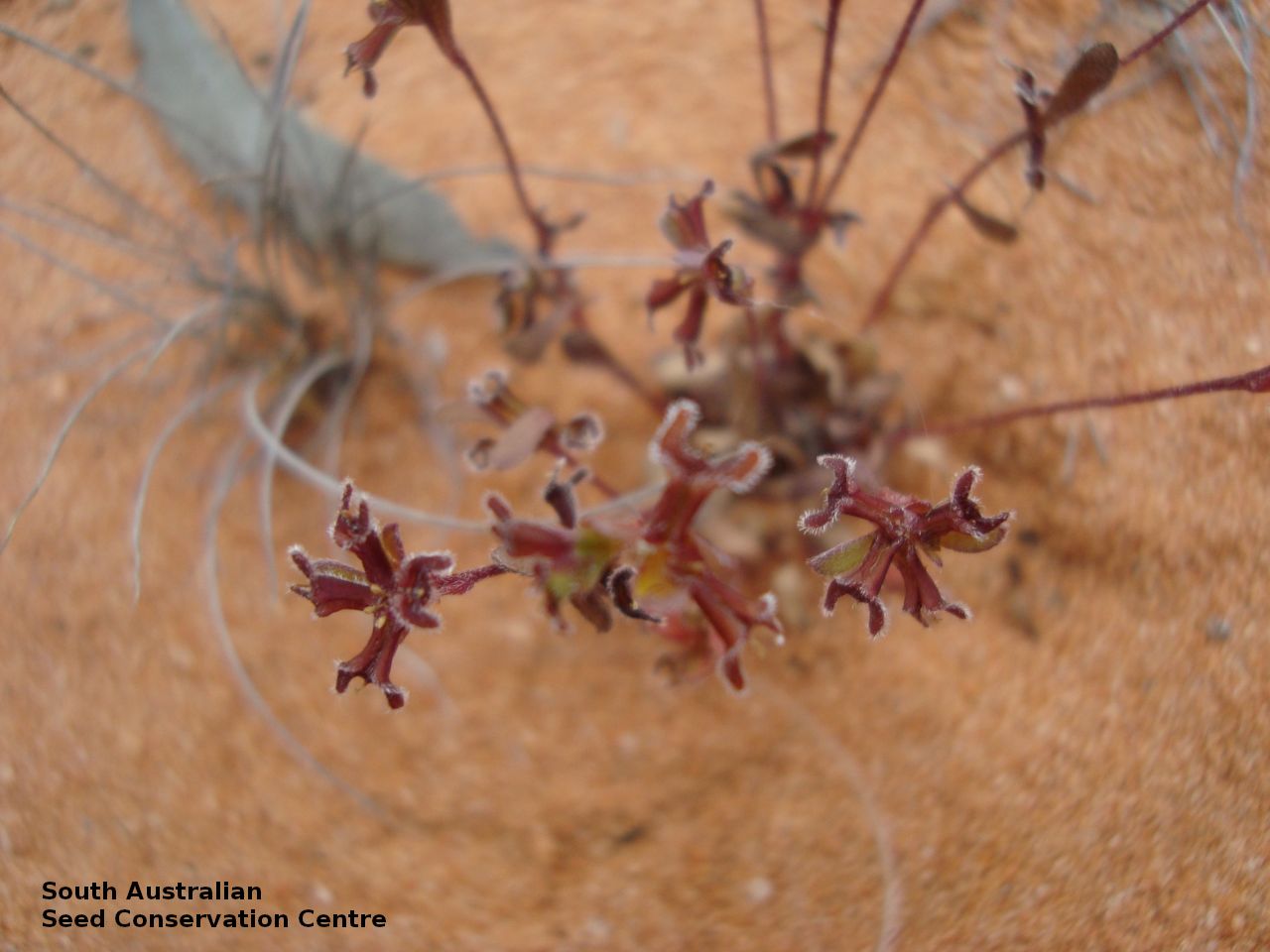
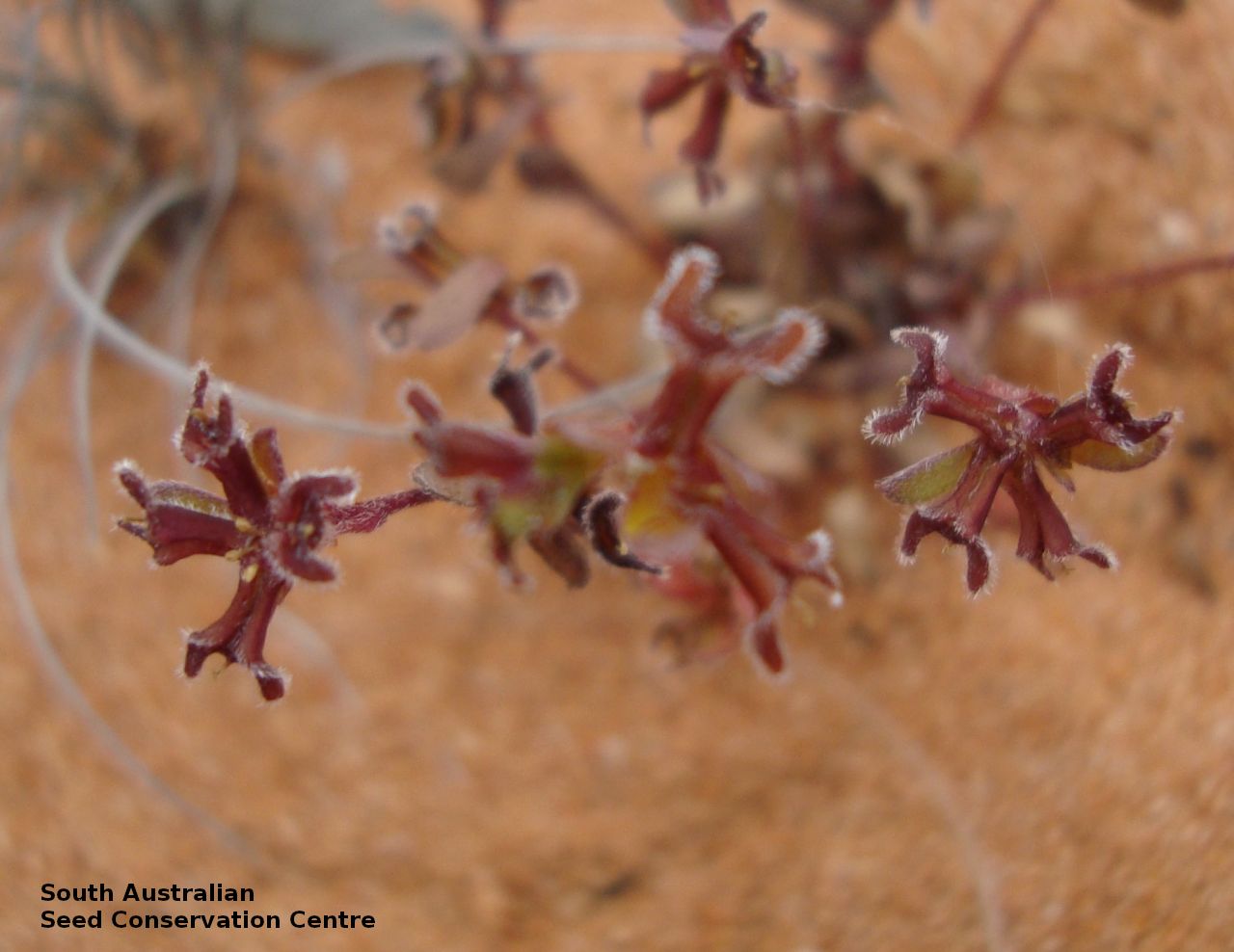
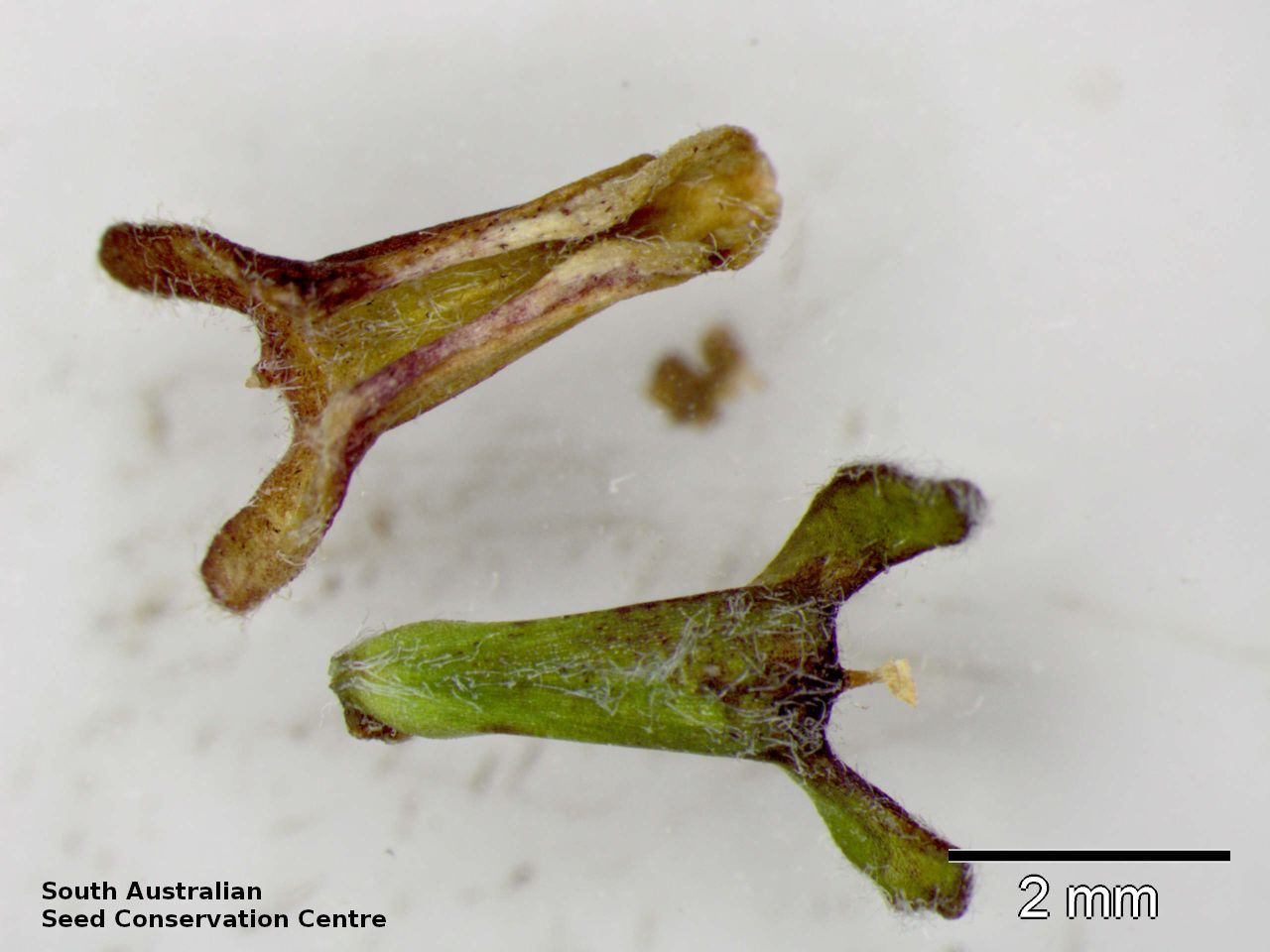

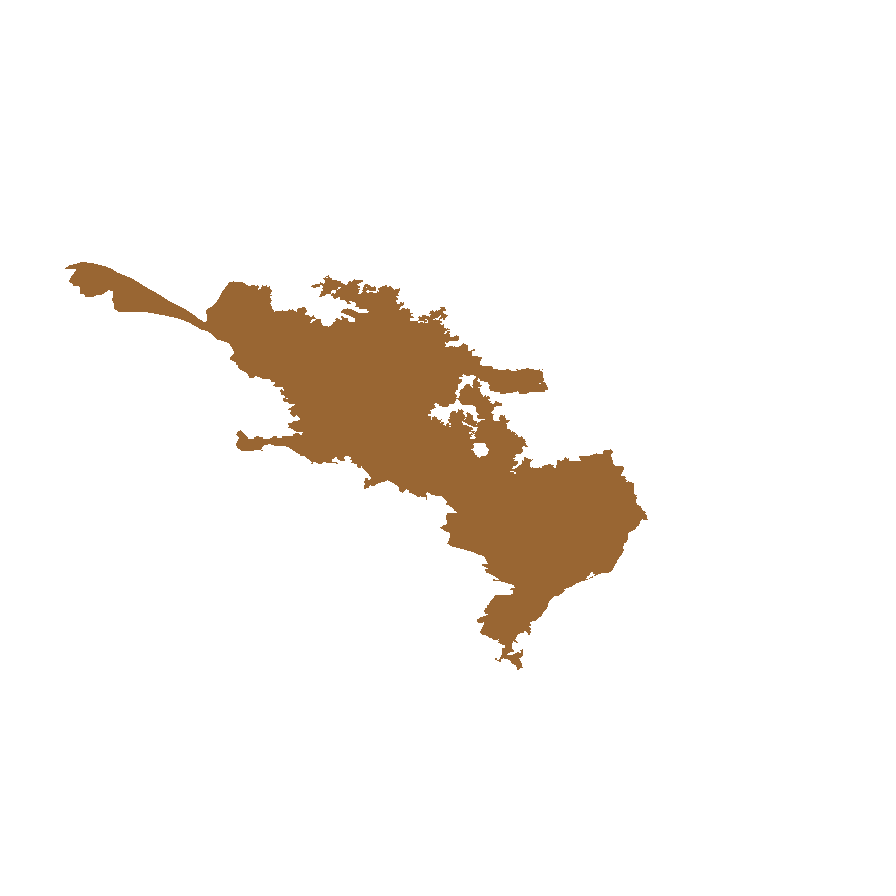
Botanical art
Prior names
Diotosperma drummondii
Etymology
Ceratogyne from the Greek 'keratos' meaning a horn and 'gyne' meaning female, referring to the horn-like appendages on the achene. Obionoides meaning resembling the genus Obione; may be referring to the similarity of the genus fruiting clusters and fruit shape being similar in profile to Obione pedunculata.
Distribution and status
Found on upper Eyre Peninsula in South Australia growing on sandhills. Also found in Western Australia, New South Wales and Victoria.. Native. Uncommon in South Australia. Rare in New South Wales and Victoria. Common in Western Australia.
Herbarium regions: Gairdner-Torrens, Eyre Peninsula
NRM regions: Eyre Peninsula, South Australian Arid Lands
AVH map: SA distribution map (external link)
Plant description
Annual or ephemeral herb to 15 cm high with several ascending, unbranched or few-branching, hairy stems. Leaves green or red. Basal leaves oblanceolate, attenuate at the base, to 18 mm long and 4 mm wide, entire, pubescent with a prominent mid-vein; stem leaves oblanceolate to oblong, acute to 10 mm long and 3 mm wide, entire, pubescent. Flowers yellow. between September and November. Fruits are red to brown loose clustered head. Seeds are red to brown, horse head-shaped seed to 4 mm long and 1.5 mm wide, margin curved inward with two horn-like projections, covered in scattered hairs. Seed embryo type is spatulate.
Seed collection and propagation
Collect seeds between October and November. Collect seeds that are maturing, turning red or brown by plucking it off with your fingers. Mature seeds are easily removed. Place the seeds in a tray for a week to dry. No further cleaning is required if only the seeds are collected. If collected with other material, then use a sieve to separate any unwanted material. Store the seeds with a desiccant such as dried silica beads or dry rice, in an air tight container in a cool and dry place. From one collection, the seed viability was average, at 70%.
| Location | No. of seeds (weight grams) | Number of plants | Date collected | Collection number Collection location | Date stored | % Viability | Storage temperature |
|---|---|---|---|---|---|---|---|
| MSB | 2,600 (3.93 g) | 18-Sep-2008 | MJT180 Eyre Peninsula | 70% |
Number of plants: This is the number of plants from which the seeds were collected.
Collection location: The Herbarium of South Australia's region name.
% Viability: Percentage of filled healthy seeds determined by a cut test or x-ray.